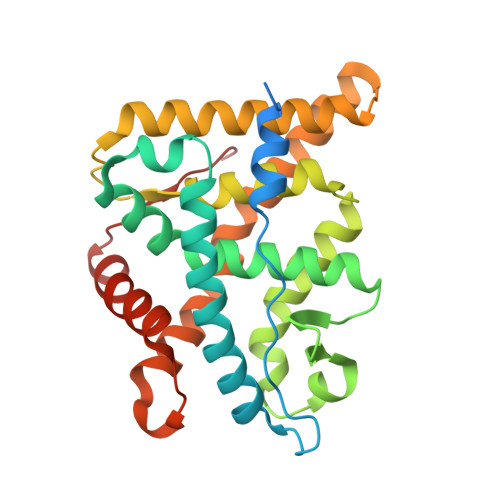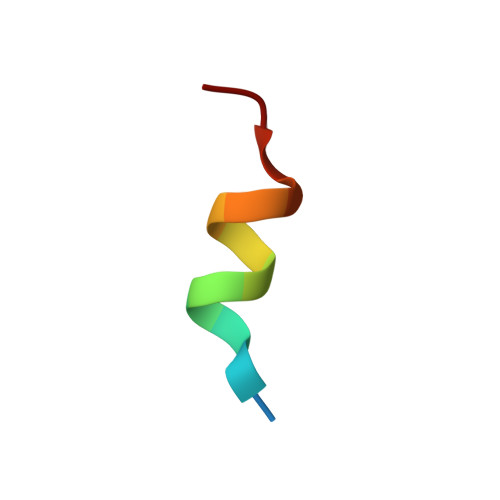Selective Nonsteroidal Glucocorticoid Receptor Modulators for the Inhaled Treatment of Pulmonary Diseases.
Hemmerling, M., Nilsson, S., Edman, K., Eirefelt, S., Russell, W., Hendrickx, R., Johnsson, E., Karrman Mardh, C., Berger, M., Rehwinkel, H., Abrahamsson, A., Dahmen, J., Eriksson, A.R., Gabos, B., Henriksson, K., Hossain, N., Ivanova, S., Jansson, A.H., Jensen, T.J., Jerre, A., Johansson, H., Klingstedt, T., Lepisto, M., Lindsjo, M., Mile, I., Nikitidis, G., Steele, J., Tehler, U., Wissler, L., Hansson, T.(2017) J Med Chem 60: 8591-8605
- PubMed: 28937774
- DOI: https://doi.org/10.1021/acs.jmedchem.7b01215
- Primary Citation of Related Structures:
5NFP, 5NFT - PubMed Abstract:
A class of potent, nonsteroidal, selective indazole ether-based glucocorticoid receptor modulators (SGRMs) was developed for the inhaled treatment of respiratory diseases. Starting from an orally available compound with demonstrated anti-inflammatory activity in rat, a soft-drug strategy was implemented to ensure rapid elimination of drug candidates to minimize systemic GR activation. The first clinical candidate 1b (AZD5423) displayed a potent inhibition of lung edema in a rat model of allergic airway inflammation following dry powder inhalation combined with a moderate systemic GR-effect, assessed as thymic involution. Further optimization of inhaled drug properties provided a second, equally potent, candidate, 15m (AZD7594), that demonstrated an improved therapeutic ratio over the benchmark inhaled corticosteroid 3 (fluticasone propionate) and prolonged the inhibition of lung edema, indicating potential for once-daily treatment.
Organizational Affiliation:
Respiratory, Inflammation & Autoimmunity, Innovative Medicines and Early Development Biotech Unit, AstraZeneca , Pepparedsleden 1, Mölndal, SE 43183, Sweden.

















